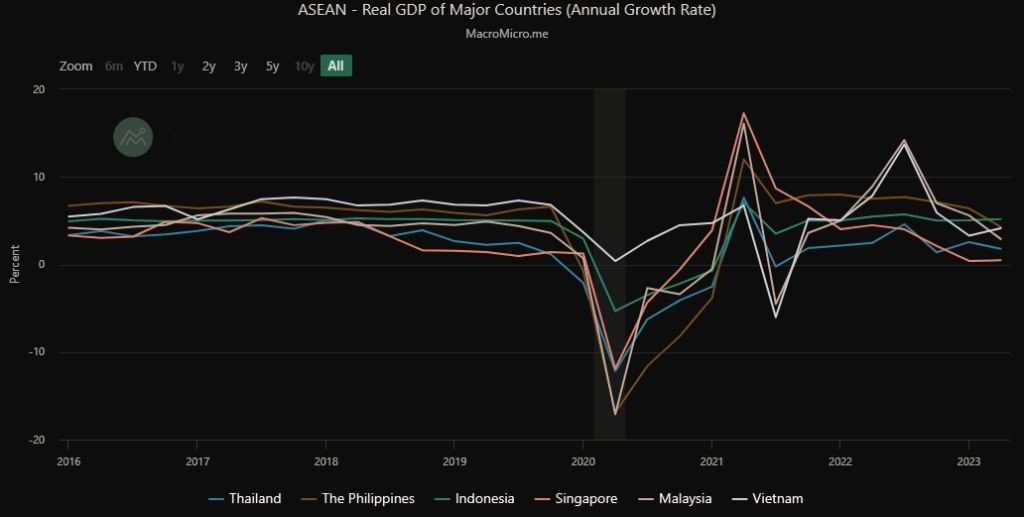I’m learning that Southeast Asia has a large number of subways and railways currently under construction (I suggest zooming into the maps linked as some of the projects don’t show up properly). Here’s a roundup of the state of railway construction projects in Southeast Asia as of October 2022.
I guess the region is booming and they’re building stuff that’s been sorely needed for decades. The railways are especially impressive considering how mountainous and jungled most of the region is. And yes, they do have high-speed rail, or will shortly in a couple of months (the Jakarta to Bandung HSR is opening later this year).
Honestly, it’s startling to read about someplace that actually gives building public transit the priority it deserves. And there’s a ton of infrastructure being built: bridges, airports, hospitals, and so on and so on.
It’s strange to live in the End of History – also known as the developed world – and peek at someplace where history still happens. Here in dear old declining Canada, the political establishment seems to think that we’ve reached the final perfect society and all that remains is to keep things at a steady state. It’s of course a bullshit mindset that delays the very necessary and radical reforms that we need to get out of our downward spiral (try googling “Canada housing crisis” sometime, or “Canada cost of living”, or maybe “Canada healthcare crisis”).
But in Southeast Asia, the leaders and the people are very much aware that they need massive structural changes and are frantically doing everything that they can to push those through. And maybe they might. The region’s GDP growth rates have been ridiculously high for the past 20-30 years, ranging between 3-8 percent when 2 percent is considered booming in the Global North.

I’ll be honest, I’ve spent the last while watching Youtube videos projecting country GDPs like the one below about the Top 20 Largest World Economies. I like to keep my eye out for members of the Association of Southeast Asian Nations. Watch for Indonesia getting on the board in 2005 then being joined by Vietnam in 2044 and the Philippines in 2048. It’s oddly relaxing to see the masters of the world like the Netherlands and Switzerland drop out of sight and get supplanted by the likes of Bangladesh and Iran.
Obviously the projections are hogwash. They’re merely current GDP growth rates taken to their mathematical endpoint. Any number of things could throw a spanner into the works: a war, another pandemic, a revolutionary new technology, a terrible climate breakdown. The projection is most believable the closer it is to the present day.
But just look at that chart in 2100. China and India are struggling for dominance, the US is at #3, then come Indonesia and the Philippines while Vietnam, Nigeria, Brazil, Pakistan, and Bangladesh fill out the top 10. Has any near-future science fiction story ever imagined this kind of world? I wish I could live long enough to see if this ever comes to pass.
Ah, what a thing it is to still be optimistic about the future. It’s a strange thing to glimpse from the other side of history.